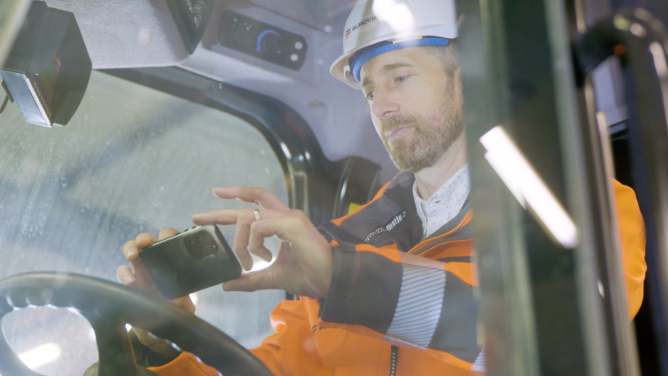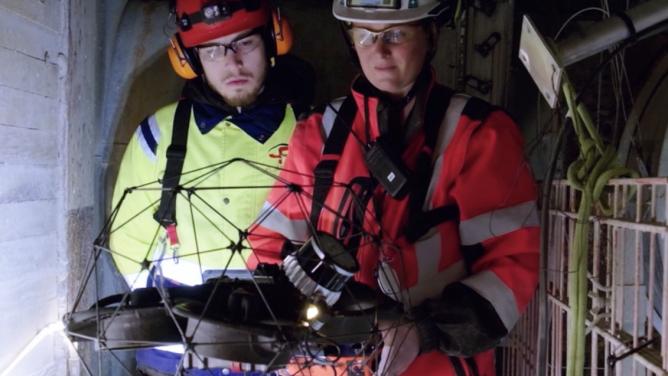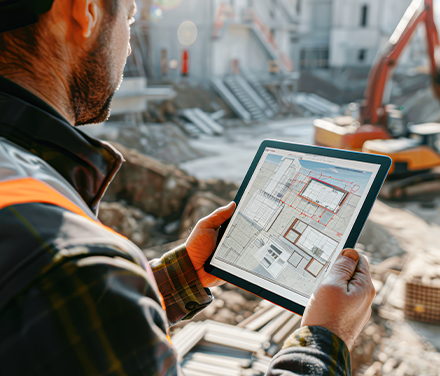In October 2020, the structural works for the Archipel, VINCI’s future head office and an architectural complex of approximately 75,000m2, designed as a demonstration of the Group’s know-how, will be completed in Nanterre. Beyond the architectural gesture (a series of interconnected and interdependent islands forming part of a territorial redevelopment project to create a new mixed-use district to the west of the Grande Arche de La Défense), the project presents some unique construction challenges. Firstly, the interconnection between the Archipel and the new Nanterre train station, but also the need for phasing designed “backwards”. There are also logistical challenges, linked to the simultaneous progress of several other adjacent construction sites, which are all supplied from the extremely busy Boulevard de la Défense.
Complex city looking for new production logistics
The VINCI Archipel is far from an isolated case, since XXIst century “city production” gives room to territorial transformation projects and the redevelopment of entire districts. In fact, it takes place in terms of a new paradigm, that of “urban complexity”. Beyond the lack of building space and putting the necessary revitalisation policies on the public agenda, the city is a “complex system”, and even an incomprehensible and uncertain system. It is part of an unpredictable territorial multi-layering, and this for several reasons: it causes an “interlocking of scales”, it must also take into account the long-term and the recent challenges of reducing environmental and socio-economic costs, and finally, it is the norm for its design and construction to involve multiple partners.
Although urban demand is not drying up, manufacturing logistics inevitably reflect these complexity challenges and are forced to reinvent themselves. This is one of the objectives of the new so-called “smart construction logistics”, fuelled and guided in recent years by a vast research project led by JPI Urban Europe, a pan-European knowledge hub dedicated to urban issues, particularly from a civil engineering perspective. This project takes as its starting point two observations: that of the passivity of stakeholders on the subject of finding new smart, green and safe solutions for site logistics, but also that of a possible economic opportunity (overall productivity gains of around 30%). After studying the optimisation potential of large property development and urban infrastructure projects in Amsterdam, Vienna and Brussels, its conclusions are unmistakable: organisational inefficiency (lack of coordination of transport on the site, planning of materials management, etc.) calling for a new “smart governance” to be founded. Alexis Commarieu, the engineer (VINCI Construction) responsible for the logistics of the Archipel sites, agrees: “it is a question of having the most comprehensive management possible, especially on a site that includes five buildings, each in a different state of progress, as ours is. Mastering complexity, in an extremely constrained environment and adjacent to other sites, requires an optimisation of flows at all costs”.
Optimising, platforming, digitising
For even recent innovations, such as centralization through a construction logistics centre in Vienna or for the impressive revitalisation project of the Royal Seaport of Stockholm, do not prevent each contractor from managing material handling and resource management “in their own way”. The key: calculate, model and use new optimisation tools to plan and evaluate the “flows” (of transport, in particular) that make up any construction project, and use activity-based costing, a method for quantifying and managing real costs.
But logistical responses to the new challenges of construction go beyond the sole, admittedly crucial, issue of planning tools. It is the very organisation, in particular spatial organisation, of the sites that is destined to be redesigned, as promoted by the concept of the “inter-site logistics platform”, as conceived in particular by a “lean construction” player with a view to reducing the traffic of trucks transporting materials in an urban context. The idea of this award-winning project from the Urban Lab of the City of Paris which will be tested in the so-called “Chapelle-S” urban innovation district, is to pool storage spaces and optimise input and output flows by rethinking the organisation at a “meta” level, i.e. at the level of several sites located in the same logistics area.
The tested solution implements a common physical logistics platform but also uses a digital application for planning deliveries and managing logistics, based on a collaborative platform for sharing tasks and data (temporal, spatial, volumes) between the different stakeholders in real time. In a nutshell: the site logistics converted into data and shared with everyone with a view to being optimised. In the absence of space to use buffer zones, flow management has to take this route, and it is no coincidence that the Archipel site is using this same collaborative interface. As Alexis Commarieu suggests, “this practice is rooted in use, even if it still frightens a few “smaller” players. We are therefore able to cross over delivery flows related to structural works and cranes and those of deliveries managed by site lifts as little as possible. And for the complex, day-to-day management of on-site staff, such an interface represents the future.” It is a software revolution that is gentle but having an impact and it is taking shape with the help of APIs, scalable servers, administration consoles and modular plug-ins, like those offered by Kuzzle and others and which, in an age of the IoT, can be added to the data communicated by new tools, machines, equipment and connected site technologies. Digital site management, beyond full BIM, is underway.


